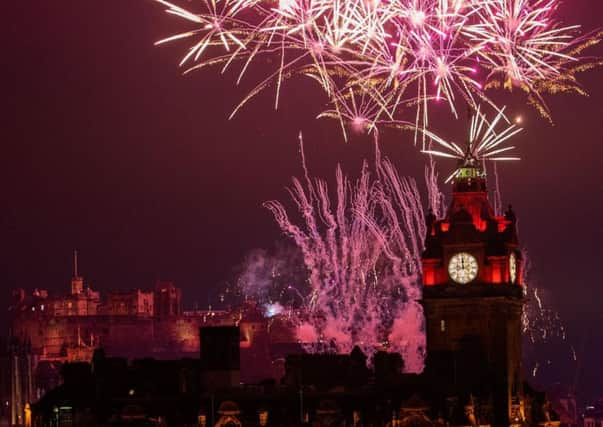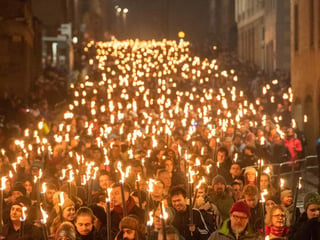Edinburgh’s festivals must present united front against storm of abuse – Brian Ferguson


Ihis is a tale of two cities, similar in appearance, yet worlds apart. One, a fairytale city with a castle on top of a hill, invites an Oscar-winning musician to star at its world-famous New Year’s Eve party. Tens of thousands flock to the celebrations, fill hotel rooms, bars and restaurants for days, bringing colour and life to the streets, and ensuring the city remains in the spotlight for another year. A Hollywood princess stays in the city over Christmas and takes part a fire parade in between making a new movie.
But in the alternative city, the Oscar-winning musician (Mark Ronson) and the Hollywood princess (Vanessa Hudgens) have vanished. The town’s enraged citizens have turned on its beleaguered leaders and revolted against the dastardly villains from an evil world over the border, in they belief they have hatched a plot to shape the fairytale city in their own image.
Advertisement
Hide AdAdvertisement
Hide AdThe truth of what actually unfolded before, during and after Edinburgh’s Hogmanay celebrations is probably lost forever. In more than 25 years of reporting on events in the city, it is hard to recall such a spate of negative headlines. But their volume must be balanced by the fact that many have been fuelled by mischief-making and the spreading of misinformation.
In the space of a week, I read that Edinburgh’s Hogmanay was commercialised for the first time and expanded its street party to become bigger than ever. I read outrage about producers Underbelly forcing residents to secure passes for the first time if they lived inside the official street party arena and introduce a £12 charge to swim in the Firth of Forth. I read that Underbelly “makes” £45 million from Hogmanay and is also now “running” the Fringe. All nonsense. The last claim was one of the most widely reported, by news media across the UK.
Genuine concerns
Tickets have been required to gain access to the main event since 1997 – a move ordered in the wake of severe overcrowding the previous year. A modest charge for all tickets was imposed in 2004, after the first of two cancellations due to bad weather, but it has gradually crept up as the event’s public funding has been cut. In 1999, the street party’s capacity was 180,000 – nearly two and half times the current size. It is as low as it has ever been in its 27-year history. So is the council’s Hogmanay funding.
Yet it is hard to avoid the conclusion that there is a major rebuilding job to do to restore the reputation of the Hogmanay event and of the city itself. Deeply misleading claims and misreporting should not be allowed to mask genuine concerns over the impact of the Christmas and Hogmanay festivals on the city centre, particularly with an official report warning in the summer that greater management of events was needed to reduce the risk of the city reaching a “tipping point” for the way taxpayers feel about tourists. There are unanswered questions about why a two-year extension to run the winter festivals was agreed by council officials and not elected politicians. It is hard to believe the latter signed off the removal of a Nativity scene to make way for a whisky sponsor’s branding.
Other festivals, particularly the Fringe, may be justifiably twitchy about the avalanche of abuse for Underbelly and councillors over Hogmanay. Now may be the time for the city’s festivals to present a united front, rather than retreat into their own bunkers and wait for the storm to pass. As for Edinburgh’s Hogmanay, it has put the city on the world map for more than a quarter of a century. It is incumbent on all those involved to ensure it survives and thrives for another 25.
